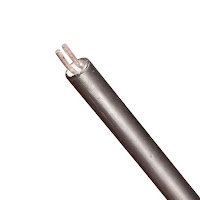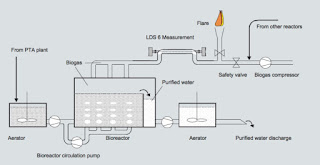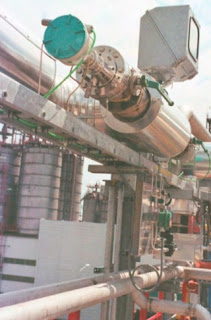 |
| Heat Tracing Self-Regulating Cable |
To specify components for an effectively designed, totally electric heat trace system, it is necessary to understand the basic principles involved. A heat trace system is designed to replace heat lost through the thermal insulation from equipment in the system. In some applications, heat tracing will also be able to provide enough heat to significantly change the process temperature.
It is always recommended to use thermal insulation since heat loss from bare surfaces is very high and heat transfer between the heater and the pipe/vessel is highly variable. All insulation should be weatherproofed. Wet insulation is ineffectual and heater output is insufficient to dry it.
Self Regulating Heater Cable
Self Regulating Heater Cable will adjust its own output in response to pipe temperature. Available in a variety of temperature and power ratings up to 230°C (450°F) and 65.6w/m (20w/ft.). Product features include:
- Variable Output
- Self-Regulating heaters will react to variations in temperature encountered at every point along its length. Colder sections receive more heat output, while warmer sections receive less. This provides greater energy efficiency and more uniform pipe temperatures.
- Can Be Overlapped Without Damage
- Because Self-Regulating heaters controls its own output, overlapped sections produce less heat, eliminating “hot spots” and possible burn-through common with other types of cable.
- Fail Safe
- Upon reaching the upper limits of its temperature range, Self-Regulating heaters diminishes its own heat output to an insignificant level. This guarantees that maximum temperatures (T ratings) cannot be exceeded no matter what product is used in any application.
- Easy Installation
- Because of its infinite parallel path circuitry, Self-Regulating heaters can be cut to any length in the field without affecting the heat output or creating “dead zones”.
 |
| Constant Wattage Heat Tracing Cable |
Constant Wattage Heater Cable is a parallel resistance heater that produces the same watts-per-foot of heat along its entire length.
- EasyInstallation
- Constant-Wattage heaters can be cut to length and terminated in the field.
- Economical
- Provides good power densities and exposure temperatures with parallel circuit cable capabilities at economical prices. Exposure Temperatures to +204°C (+400°F). Ideal for maintaining many process temperature applications.
 |
| MI Cable |
Mineral insulated Cable is a series conductor, high temperature heater cable with a special, thin metal sheath. Some of MI advantages are:
- Corrosion-Resistant
- Alloy 825 sheath provides excellent corrosion resistance and immunity from chloride stress corrosion - a common problem with stainless steel.
- Ideal for High Temperature Applications
- Mineral Insulated heaters can withstand exposure temperatures up to 593°C (1100°F). Exposure temperatures can be increased to 750°C (1400°F) with special components.
- Ratings To 600V
- Mineral Insulated heaters are available in a variety of voltages to match the available power supply.
- High Heat Output
- Mineral Insulated heaters have heat output ratings up to 10 times higher than most other cables, reducing the amount of cable required.
- Rugged Construction
- A durable metal sheath provides greater mechanical protection.
- Thin Wall Construction
- A unique manufacturing process allows thin wall cable construction for easier field installation.
Tank Heating Panels
 |
| Heating Panel |
- Low Cost Installation
- Flexible silicone construction allows panel to conform to tank wall. No bonding or heat transfer aids are required.
- High Temperature
- Tank Heating Panels maintain temperatures up to 79°C (175°F) and can withstand exposure to 204°C (400°F).




